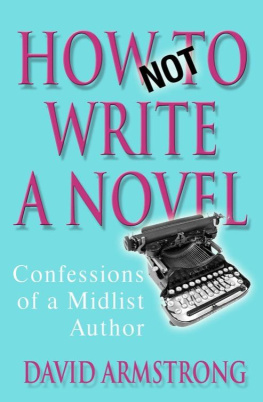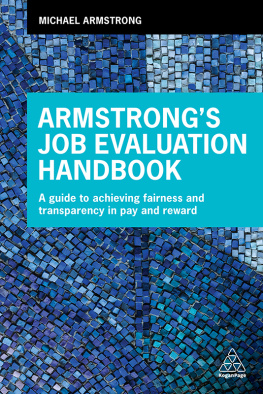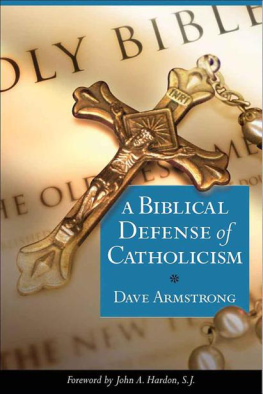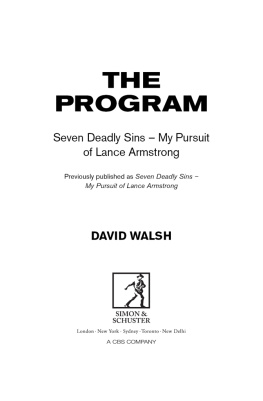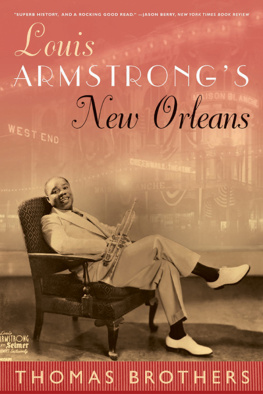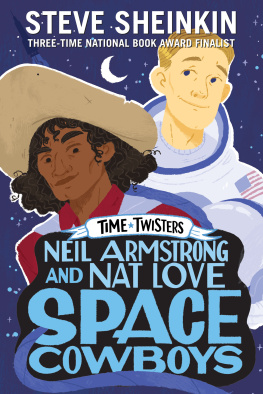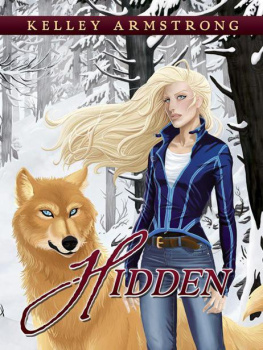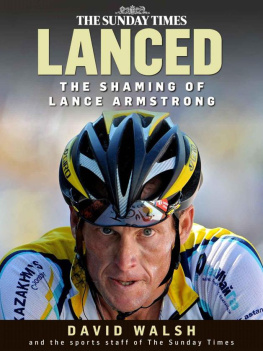Every week, agents and publishers in this country receive hundreds of manuscripts from would-be authors. Of these, fewer than one per cent will make it into print.
David Armstrong was one of the one per-centers, his first crime novel plucked from the slush pile at HarperCollins and published to acclaim.
But this book is not only for writers, its for readers, too. An A-to-Z of the disappointments, frustrations, delays, rejections and occasional joys of a writers life, theres something here for anyone whos interested in whats really involved in being a writer.
Nobody knows anything, says Armstrong: huge advances paid for books which fail; JK Rowlings Harry Potter sales to date nearly 150 million copies turned down by some of the countrys biggest publishers.
But with five highly-praised crime novels published during the last eight years, David Armstrongs only partly right this is a book written by someone who clearly does know about the agonising road into print.
If youre thinking of becoming a writer, read it.
If youre still writing at the end of it, youd better accept it: youre probably a writer too!
Why Not Be A Writer? ask the ads in the Sunday papers.
The shelves of your local bookshop are packed with How to books. Books that tell you how to write a thriller, a blockbuster, an historical romance. They tell you how to plot your novel, write dialogue, create characters, pace your prose and then, having done all this, how to lay-out and package your book for dispatch to a waiting world.
They tell you to consult The Writers and Artists Year Book on how to get an agent (by having a publisher) and how to get your manuscript read by a publisher (by having an agent); which publisher to send your manuscript to; how to include postage and packing; how long to wait before making a follow-up telephone call and, throughout it all, how to remain polite, but firm.
Ive just been to my local bookshop. There are forty-three works of guidance and advice for writers.
Many of these books are written by people I have never heard of. Like those ads that claim success for get-rich-quick schemes, if these authors really do know how to do it, then why arent they doing it for themselves?
I have several How to write books on my own shelves: Andre Jute, Michael Legat, Lesley Grant-Adamson, HRF Keating, Julian Birkett et al. I also have several writers memoirs/biographies and autobiographies: Alan Bennett, Martin Amis, Brian Aldiss, Simon Gray, Philip Larkin, Mike Leigh and John Braine.
But what I dont have is a How to write/get published work combined with a practising writers account of the day-to-day business of being a writer.
So, Why not be a writer? Well, for starters, there are already far too many writers in the world. Just as there are too many books and too many bookshops. There are also lots of agents who dont want to represent you, and tons of publishers who dont want to publish your book! And, unless youre a genius, its very hard: like playing the piano or learning to paint, you really have to stick at it.
How not to write a novel, therefore, is an A-to-Z through the maddening, infuriating, heart-breaking journey that most writers face.
But writers write. Most of us have no choice. We have to do it. If we dont, were miserable. And if we do, were miserable too. This book has been written to help you get through the misery!
HOW NOT TO WRITE A NOVEL: AN A TO Z
Contents
The lyf so short, the craft so long to lerne
Geoffrey Chaucer The Parliament of Fowls
The list of books rejected by publishers is one of the few things in a writers life to give him real joy.
Theres hardly a title that hasnt been turned down repeatedly before going on to sell in millions.
Just like the A & R man at Decca who turned down The Beatles, and the comedy executive at the BBC who claimed that no one in Britain was going to find a sitcom about an irascible hotelier in Torquay funny, there are literary agents and editors who go to bed each night knowing that it was they who said that Harry Potter just would not sell.
And these werent shoestring operations trying to publish half a dozen titles a year from a back garden shed. No, JK Rowlings 1997 Harry Potter and the Philosophers Stone translated into forty-seven languages, total Harry Potter sales over 130 million copies was turned down by nine publishers, including Transworld, HarperCollins and Penguin, before Bloomsbury signed it up.
John Creasey, founder of the Crime Writers Association, wrote more than six hundred mystery novels under a plethora of pseudonyms, but only after collecting several hundred rejection slips.
Frederick Forsyths 1971 Day of the Jackal worldwide sales to date, over nine million, was rejected by four British publishers before it found a home at Hutchinson, and Erich Segals 1970 Love Story (21 million copies sold) was rejected by any number of publishers before making a mint for Bantam.
Are these not stories to ease the pain of any writer as he hears his manuscript thud back through the letterbox?
Stephen King (thirty-six novels in print and sales to date in the of millions) collected eighty-four rejection slips before Cavalier magazine bought his short story, Graveyard Shift, for two hundred dollars. But at least King received helpful advice with at least one of those rejection slips on a hand-written addendum were the words: never staple sheets together: use a paperclip.
Robert Pirsigs 1974 cult success, Zen and the Art of Motorcycle Maintenance (three million in paperback) was rejected by 122 publishers before it found a home at Vintage. (I didnt know there were that many publishers in America.)
And literary/commercial judgement appears to have been no less acute way back in 1920, when at least six prescient editors declined to publish The Mysterious Affair at Styles, the first novel by Agatha Christie: worldwide sales to date some two billion in over one hundred languages.
Although her sales are dwarfed by these giants, one of the most poignant stories of rejection concerns Shropshire novelist, Barbara Pym. In 1936, her first novel, Some Tame Gazelle, was rejected by both Chatto and Jonathan Cape. Pym put the book aside and began a new one, Civil to Strangers.
After the Second World War, she re-submitted the extensively revised Some Tame Gazelle to Cape. This time it was accepted, and they published it in May 1950.
During the next few years, as well as working for the International African Institute, Pym published four further novels. Sales were respectable, rather than sensational, but her writing, often likened to that of Jane Austen (whose own Pride and Prejudice, under its original title, First Impressions, was rejected before somewhat revised being published in 1813,) was held in high regard.
In February 1964, she submitted her new book, An Unsuitable Attachment to her publisher. Cape rejected the book. She wrote at the time that it was like hearing that someone doesnt love you any more.
And that was it. Barbara Pym, unloved, spent the next thirteen years sending out her rejected novel, and writing new ones, (

